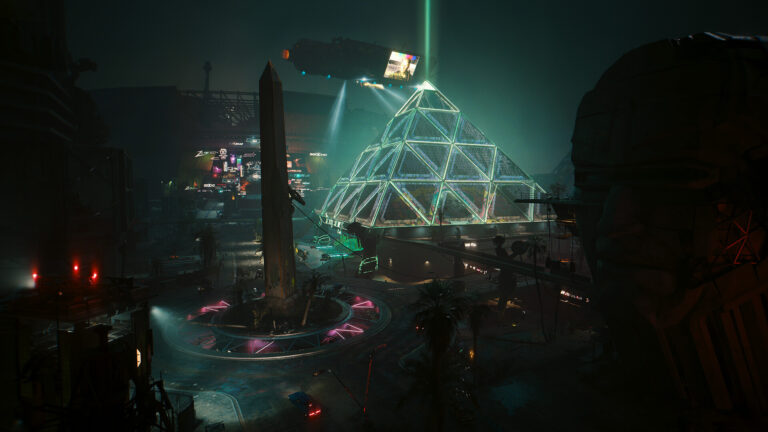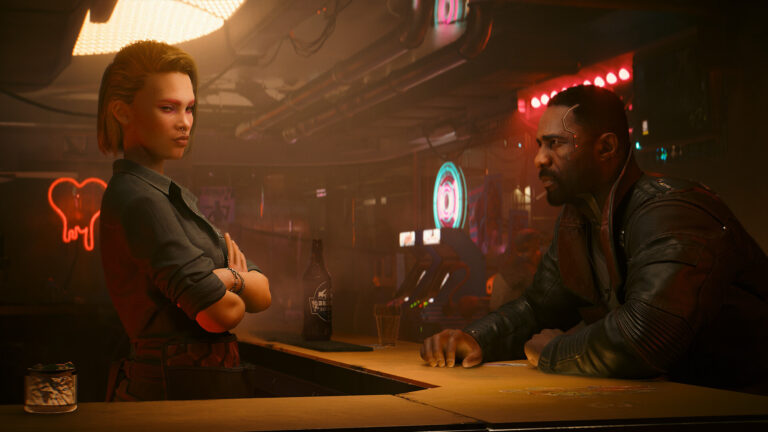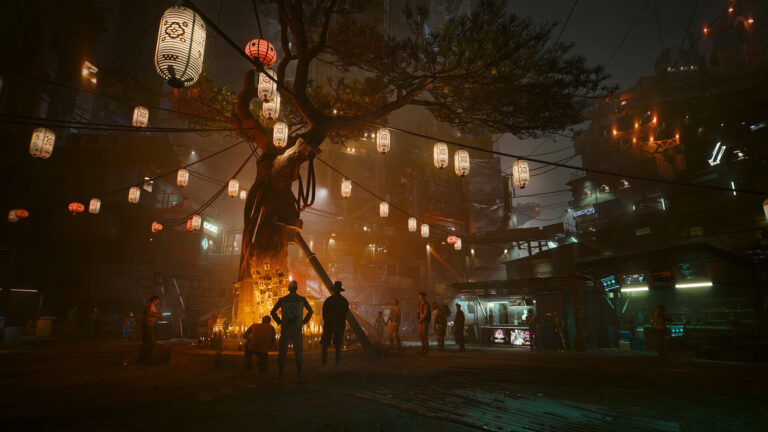It's a new day for Night City.
Cyberpunk 2077 Phantom Liberty review
Reviewed on an Nvidia GeForce RTX 3060 Ti-powered PC.

In the three years since it launched, tens of thousands of words have been penned about what went wrong with Cyberpunk 2077. The technical troubles made up most of the melody, but it was far from the only stray note. The overly edgy dialogue, cringe in-game ads, stunted character progression and shallow open world also earned their respective shares of the scorn heaped upon what could have been the next big thing.
Sure, The Witcher 3 was always going to be a tough act to follow but CD Projekt Red’s attempt to up the ante backfired so badly that it basically ended up announcing not one or two but three new Witcher titles as a makeshift mea culpa. All this is to say even its most ardent advocates would be hard-pressed to admit that Cyberpunk 2077 lived up to the hype at launch.
Now, with the arrival of the Phantom Liberty, it might as well be a whole new game.
If you want to boil it down, Cyberpunk 2077’s first and only expansion pack adds a decently lengthy series of story missions, some new side gigs, access to a new area (Dogtown) and the Relic skill tree. That spy-thriller questline in Phantom Liberty will take you longer to unravel than most of the threads in the base game, but it’s not exactly going to double your playtime. Still, apples-to-apples, it’s easily the single best quest chain in the entire game and one that more than justifies the considerable – but not excessive — asking price for the DLC.
In contrast, the best part of Phantom Liberty won’t cost you a cent. Billed as the “Cyberpunk 2.0” update, the most recent version of CD Projekt Red’s science fiction RPG makes a ton of under-the-hood changes that add replay value for long-time fans and prime newcomers for a much better first experience with the game. At this point, I’ve played through Cyberpunk 2077 about three times and it is genuinely astounding how much of an improvement these changes bring with it.
Where the arc of the game was previously one defined by a sense of accumulation, it’s now more about specialisation. Levelling up still grants you both skill and stat points, but the systems in which you invest those points have been redesigned from the ground up.
Rather than passive and incremental improvements to your ability to dish out or deal with incoming damage, the points you invest in any of Cyberpunk 2077’s five core skills trees now yield more practice enhancements to your existing skillset. Many of these can change the way you approach the encounters in the game and more than a few of them are nods to the more heightened action seen in last year’s Edgerunners anime. Melee-centric characters can now learn how to block incoming projectiles using swords and there’s a new air dash that makes navigating around Night City feel like Warframe than World of Warcraft.
If you’re returning to Cyberpunk 2077 after some time away, your version of V will have all of their skill points reset and refunded. As with The Witcher 3’s DLC expansions, you can also create a new character and jump straight into Phantom Liberty via the main menu.

As mentioned, there’s also that sixth skill tree that Phantom Liberty adds to the equation. Though smaller than the other skill trees, the Relic skill tree includes even more fun tools and tricks that let you bust the sandbox that CD Projekt Red has built apart in ways that feel fun, tactical and powerful. It introduces new mechanics like the ability to target enemy weak points or fully disengage from combat once detected.
The crafting, cyberware and gear system in Cyberpunk 2077 has also been ripped apart and rebuilt. Gear is now mostly cosmetic. Cyberware is where you’ll want to sink your time and money if you want better base stat benefits or survivability. Dismantling loot gets you crafting materials that you can use to make weapons and improve the good ones you already own.
CD Projekt Red has also made some tweaks to the open world in Cyberpunk 2077, from a now-functional police force to more developed vehicular combat and a streamlined cell phone UI. All these changes highlight just how much the launch version of the game felt like a first draft.
With this studier foundation to stand upon, it becomes easier to appreciate all the ways in which the Phantom Liberty expansion elevates what Cyberpunk 2077 was already good at while course-correcting for its messy missteps. This time around, the dialogue here is as flavorful as ever but dialled just that little bit downwards to avoid falling into the chasm of cringe that so often reared its head in the base game.
The bulk of the action here takes place in a new district of Night City known as Dogtown. Previously inaccessible and located adjacent to Pacifica, this corner of the city is ruled by a military dictator by the name of Kurt Hansen.
As V, you’re contacted by an agent of the President of the New United States of America and called to duty. The president’s plane has been hacked and is set to crash land in the district. Your job is to get in, get the president out of harm’s way and get to the bottom of who was responsible. Along the way, you’ll encounter about a dozen or so new side gigs (courtesy of Mr Hands, the most underutilised fixer in the original game) and form new alliances with characters like Idris Elba’s Soloman Reed.
Despite its status as a sub-region of the existing map, Dogtown feels like a whole new location. As with Night City itself, the sense of scale is very real here and there’s a sense of character to it that many other districts in the game lack. This is the part of town where military propaganda is all around you, the NCPD is nowhere to be seen and nearby drivers will actively try and run you down for the fun of it.
Keanu Reeves even makes a return as Johnny Silverhand, adding fresh wrinkles to his performance in the base game. At its best, these new character beats add depth and well-roundedness that’s easy to appreciate. Minus the pressure of the main plot, the presence of Cyberpunk 2077’s resident ghost raging against the machine is a significantly less grating one.
All told it took me about 20 hours to see Phantom Liberty through to its conclusion. What’s more, the final destination here is a pleasantly thorny one. Even as I made what I felt like were the best decisions at the moment, the way that things wrapped up actively left me questioning those choices in a way that the baseline Cyberpunk 2077 experience didn’t.
Each mission in the expansion feels well-paced and distinct. You’ve always got something new to chew on and there are even moments where Cyberpunk sidetracks into other genres like heists and survival horror. There are a few branching paths along the way – which may add replayability for some – plus a new ending to the base game for those who want to pursue it.

Is Cyberpunk 2077: Phantom Liberty worth the money?
Look, I love a problematic fave. I’ll take a big swing over a safe one any day of the week, even if it misses. While the degree to which Cyberpunk 2077 failed might be debatable, the reality that it did is as apparent as the fact that it was CD Projekt’s first game with guns, cars and an open world. Fake it till you make it can get you pretty far, but it's hardly the mantra upon which your best work gets done.
I thought I’d have to wait until Cyberpunk 2078 to find out what – if anything – CD Projekt had learned from that first game. Given a second crack at it, what could it do differently? Phantom Liberty gives you both the answer to that question and a reason to get hyped for what comes next.
It took a little longer than expected, but CD Projekt Red finally learned to make a good version of Cyberpunk 2077. Now, it feels like it’s only a matter of time until it can put together a great one. A problematic fave is all well and good, but who doesn’t love a redemption arc?
Related Articles






